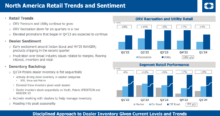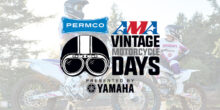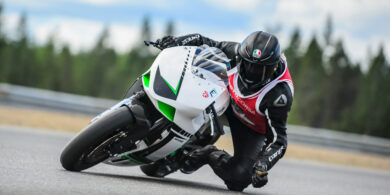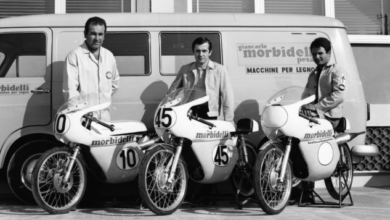UTV Sales to Top 200,000 Units in ’05
One market that experienced a significant resurgence over the last year and a half is that for utility vehicles (UTV). UTVs encompass a broad number of vehicle types. Probably the two most important considerations are that UTVs typically have bench or bucket seats for one or more passengers as opposed to all-terrain vehicles (ATVs) where single passengers straddle the machine like a motorcycle. Another consideration is that UTVs typically have rear dump beds, although some analysts include personnel carriers as UTVs where the cargo bed is replaced by additional seating.
Historical Sales Analysis
Between 2000 and 2002, the North American utility vehicle (UTV) market struggled just to maintain its overall 100,000 unit level as whatever gains were made in the consumer segments of the market during 2001 and 2002 were offset by ongoing declines in the commercial segments such as golf, resorts and industrial applications. This was in stark contrast to what occurred between 1996 and 2000 when UTV sales more than doubled with much of the growth coming from the consumer side of the market, although even the commercial segment experienced significant growth then.
During 2003, however, the overall UTV market jumped by nearly 21% from nearly 105,000 units to nearly 127,000 units, of which turf type UTVs accounted for about 112,000 units, as the U.S. economy recovered in the second half of the year after a long two-year slump. According to our analysis, the commercial segment overall appears to have increased moderately by about 5% while the consumer segment shot up about 40% as a result of new competitors entering and penetrating the market through their channels and customer bases as well as established OEMs introducing new upgraded series and brand new models. Examples are Bobcat (Melroe), Cub Cadet, Deere, E-Z-Go, Landpride, Yamaha and Yerf-Dog.
Consumer Versus Commercial
UTV Sales
According to our overall analysis consumer applications, which include Farmers & Ranchers and Homeowners, i.e., large-acre estates/hobby farms and hunting/sport, have surged to 52% of 2003 sales compared to about 48% for commercial applications. The consumer segment has risen dramatically over the last three years from 29% in 1998, 36% in 2000 and 45% in 2002. Back in 1995, we estimate consumers accounted for 22% of North American UTV sales compared to 78% that was predominantly commercial applications.
Major OEM Shares
As has been the case in over the last three years, five OEMs dominate the North American UTV market. Although the five accounted for nearly three-quarters of the total North American UTV market in 2003, this share slipped from about 80% in 2002 and will tumble further as two new OEMs, Kubota and Yamaha, significantly make their penetration in 2004 and 2005.
Deere is still considered the leading manufacturer of UTVs with their Gator product line that includes 6×4 and 4×2 gas and diesel models as well as electric and heavy-duty Pro Gator models. Deere Gators sells across all applications and estimates are that their share may have slipped to about 24% of the market last year from 28% in 2002 and 30% in 2001. Deere, however, has taken a major initiative to upgrade their Gator product line. A new HPX series was launched last fall replacing older Gator models along with a new CS/CX compact UTV series sold by Deere C&CE dealers and Home Depot stores. This will have a significant impact upon 2004 and 2005 sales.
Kawasaki has been marketing its popular Mule brand longer than anyone, with the possible exception of Cushman. The company introduced its new look 3000 series in the spring of 2001 but, along with Deere, appears to have lost significant sales over the last two years to Polaris. Our best estimate is that they accounted for perhaps 16% of 2003 North American UTV sales. Mules are most popular among Farmers & Ranchers and Homeowners.
Textron’s E-Z-Go subsidiary has been successful with their WorkHorse (now MPT) and ST UTV series, which E-Z-Go has produced for other Textron divisions Cushman, Jacobsen, Brouwer and Steiner. In addition, E-Z-Go sells a line of industrial vehicles and personnel carriers. We calculate Textron altogether has nearly a 14% share of the UTV market from all divisions. Cushman sales dropped significantly as E-Z-Go reorganized the operation, closing the Lincoln, NB facility in mid-2002 and delaying startup until 2003.
Polaris occupies the third position among leading brands and has been tremendously successful with the new Ranger II series introduced in the spring of 2001. We calculated Polaris is the third leading brand with about a 13% share. Up until the 2005 models, Polaris’ new Ranger series was ungoverned but now with ingenious new SpeedKey feature, owners have the option of governing their vehicle not to exceed 25 mph with a yellow key. This basically eliminated the need for a separate Professional Series.
Club Car, a subsidiary of Ingersoll-Rand, represents between 11% of the UTV market and is believed to be close to about equal to the standalone E-Z-Go brand, a Textron company. Both OEM product mixes continue to shift away from their predominant golf focus to consumers and earlier this year each introduced new 4×4 models with Honda engines and TEAM Industries 4WD systems that are very appealing.
All other OEMs comprised about 25% of the remaining 2003 UTV market. They primarily include Taylor-Dunn, Yerf-Dog, Yamaha, Cushman, Toro and Cub Cadet (MTD).
Mini Pickup Truck Niche
During 2003, the mini pickup truck niche changed significantly as a result of the new 2004 emissions. These trucks are strictly regulated for off-road use only. All engines have to be fuel injected in order to meet the stringent standards and at present there appear to be only three distributors selling Chinese-built mini trucks that have been able to pass certification — Tiger Trucks, Vantage Motors and Marathon. Cushman purchased excess 2003 inventory of the White Truck and can no longer source the vehicle from China Motors. Metro Motors stopped selling the Kia Korean truck after an apparent brief fling with Chang An, a Chinese licensee, and was acquired by Tiger Truck. Marathon is selling the Wuling truck from China but in limited numbers. Tiger (Chang An) appears to be the market leader now with Vantage (First Auto Works) ranked second. MAG International is a new player that appears is recently importing trucks from First Auto Works through a Hong Kong distributor. We estimate the market size for these mini cab trucks is about 1,000-1,100 units annually.
Industrial UTVs
The heavy gauge steel industrial vehicles can generally be classified into four distinct groups – tow tractors, burden carriers, utility vehicles and personnel carriers. The major manufacturers are Taylor-Dunn, Cushman, E-Z-Go, Columbia Par Car and Motrec with several other minor players not included in our analysis. We estimate the current market size for these vehicles to be about 11,000 units compared to the peak of 15,000 units back in 2000. By our accounting, Taylor-Dunn appears to be the market leader with about 55% of the market. Cushman is a distant second with about 15% of the market while Columbia appears could be third with about a 12-13% share. About a third of the vehicles appear to be tow tractors with another quarter that are tow tractors.
Other Developments To Watch
One new OEM that appears will make a significant impact upon 2004 and future UTV sales is Kubota. They launched a new 4×4 hydrostatic diesel UTV rated at 16,000 lbs. payload, priced at about $10,000 that has been selling extremely well. Estimates are sales could exceed 10,000 units in this initial launch year.
Yamaha launched their new Rhino “side-by-side” UTV last fall targeted at consumers and indications are sales will exceed 10,000 units through calendar 2004. Beyond that, rumors are the company is planning to triple that number in sales for 2005. Research conducted by some OEMs over the last few years has indicated a huge potential niche of crossover ATV riders 50 years of age and older that are seeking a more comfortable ride with additional seating capacity and some cargo space. Some analysts estimate this niche could reach 100,000 units over the next several years.
A major unknown is when will Honda make its anticipated entry into the UTV market? Speculation is when they do that the product could consist of an entire series of perhaps several vehicles.
Given the anticipated new UTV models being introduced and growing number of OEMs entering the market from the current estimate of over 30, indications are 2004 North American UTV sales could reach 175,000 units in 2004 and may well exceed 200,000 units by 2005 with consumers exceeding 60% of sales, assuming the U.S. economy continues to grow at a healthy rate uninterrupted. psb
Dave Crocker is senior partner for Power Products Marketing, a market research firm based in Minneapolis, Minn. PPM (Web site: www.powerprods.com) specializes in the power products and components, powersports and marine industries. Crocker may be reached at 952/886-7333 or at dcrocker@powerprods.com.









Hi Dave,
About two years ago I bought a UTV called Tiger side by side Chinese.
I have never be able to find a repair company or dealer .
It is a manual transmission and the clutch was roasted so needs a new one.
Probably 20 hours on the machine , 20 miles
If you know anyone that I can get parts or service any where in North America that would be a great help.
Thanks Dan-el
604 6490385